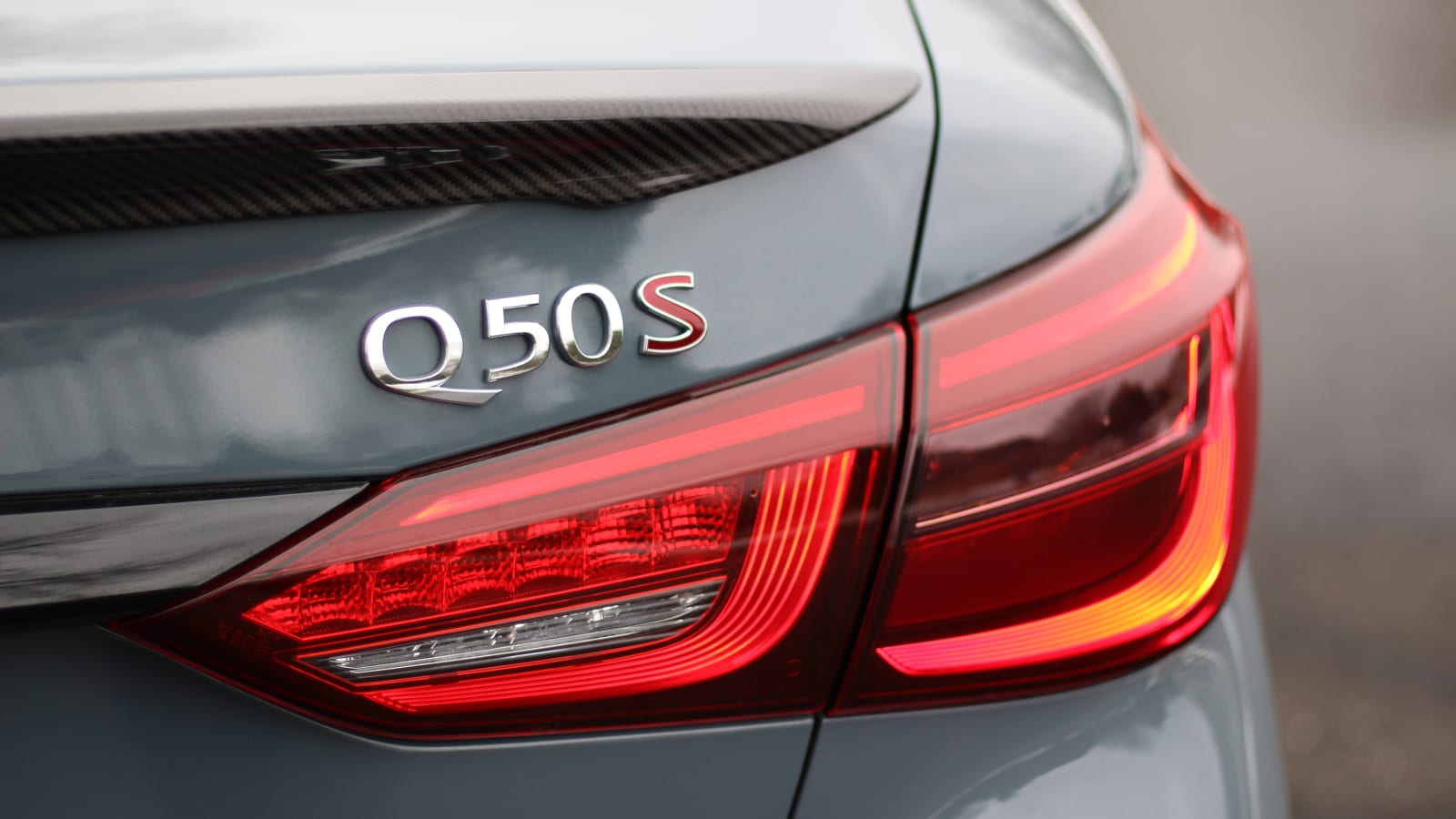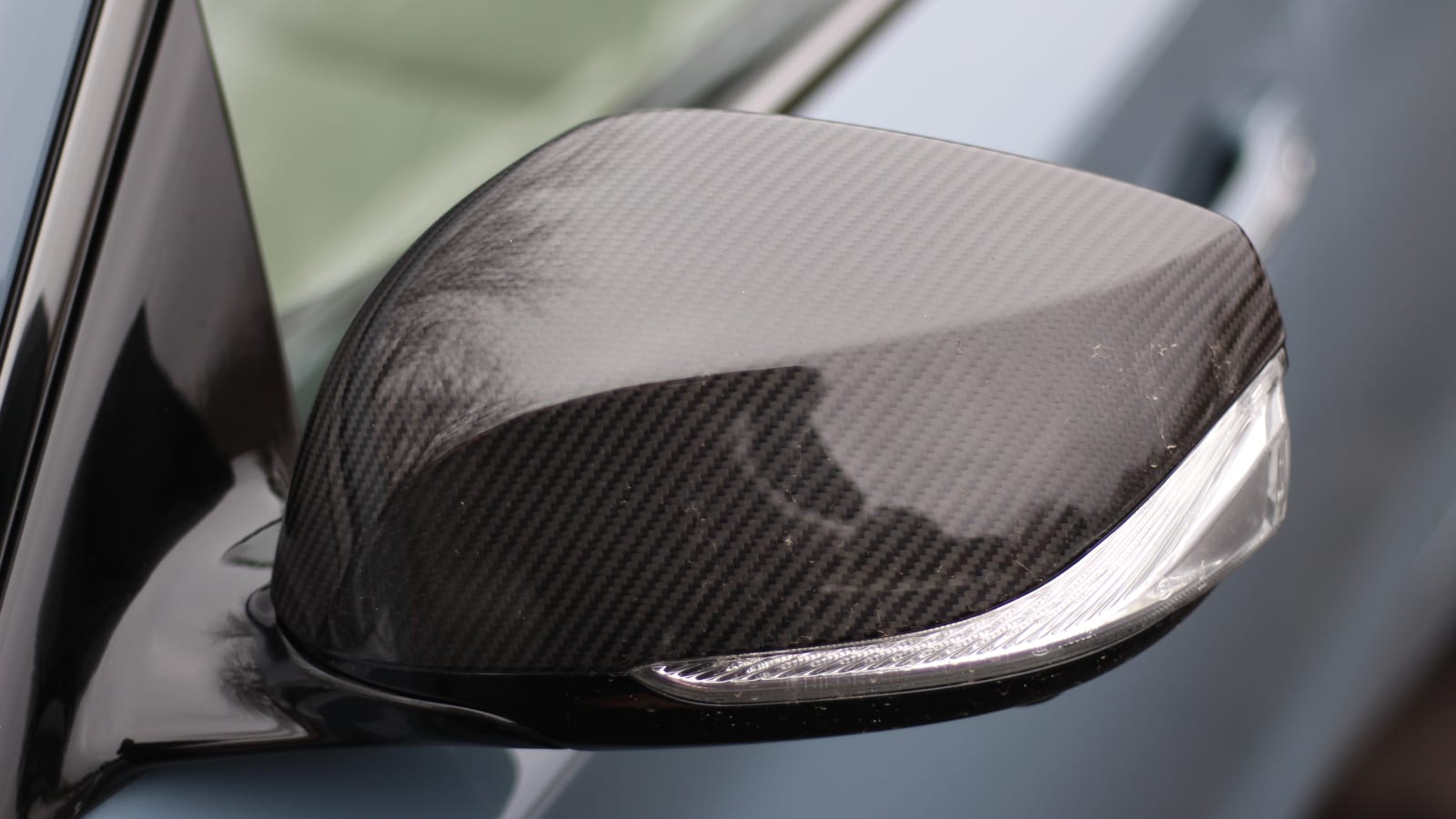There isn’t much reason to take another look at the 2021 Infiniti Q50 Red Sport 400 on the surface. It’s largely the same sedan as it was when we drove it in 2016: powerful and stylish, but lacking in tech and polish. However, what’s under the hood is of far more interest to us today than it was just a year ago. That’s because the 3.0-liter twin-turbo V6 powering this Infiniti is migrating over to the next Nissan Z car.
Nissan announced that the production Z would get a 3.0-liter twin-turbo V6 not long after it revealed the Z Proto. There are no other twin-turbo V6s in Nissan’s arsenal but this one, meaning that the VR30DDTT engine in this Infiniti is destined for the Z — plus, there’s photo confirmation. The big question remaining is: How new or different will it be?
Its most potent state of tune is rated at 400 horsepower and 350 pound-feet of torque. That’s a high number versus most other boosted six-cylinders, and perhaps most importantly, it’s more potent than the 382-horsepower 2021 Toyota GR Supra 3.0. As we’ll soon explain, though, numbers only tell part of the story.
Transplanting the Infiniti’s V6 into the next Z surely won’t be without challenges, either. Nissan is promising a six-speed manual in the Z. Meanwhile, this engine is exclusively paired with a traditional seven-speed automatic transmission in the Q50 and Q60. Nissan hitched this engine up with a manual in a 370Z SEMA show car years ago, but now it must devise a production car solution. There’s also the question of whether Nissan will use the same seven-speed as the automatic option in the Z, or come up with something a bit more aggressive. The cost-efficient (and likely) solution would be reusing the seven-speed, not unlike the Supra’s eight-speed traditional automatic.
Having all of this in mind, we set out to see how this engine sits today as a preview to the Z.
Going from the big, naturally aspirated VQ series V6 to a smaller twin-turbo V6 will bring about the obvious changes. The rabid and uncouth personality of the outgoing VQ is nowhere to be found in the sweet and smooth new engine. It’s not quite the silky, effortless BMW inline-six found in the Supra, but it brings an air of refinement and maturity that’s simply not there in the current Z.
And then there’s the torque. All 350 pounds of twist are available at 1,600 rpm in the Q50 Red Sport 400, which means the shove in the back would theoretically start just off idle. In reality, the Q50 feels as though it’s limiting torque output in low gears from a standstill, resulting in the sensation of a bogged down start in any takeoff that doesn’t involve brake torqueing it for a simulated launch. A great wall of torque arrives quickly once the revs get up, extending all the way to 5,200 rpm. It has that effortless and excessive feeling of power for mundane driving that a luxury sport sedan should have. There is a slight disconnect at times between throttle prodding and that shove in the back, but it’s expected when you resort to turbocharging for more power.
Thankfully, this engine is obviously tuned for driving pleasure when you do give it the boot. The mellow off-the-line start ultimately makes the Q50 feel like it builds power in a linear fashion up to the 6,400-rpm horsepower peak. And you won’t want to be short shifting at 5,000 – this engine encourages the driver to wind it out into the upper ranges and toward the 6,800 rpm redline. You can sense that it’s starting to run out of breath right at the top, but there’s no steep and unsavory drop off in power. Just shift, and keep the party going. That’s exactly what we’ll want in a Z car that could find itself on track using up every available rev.
Nissan will certainly tune the Z to sound different from the luxurious Infiniti, but this particular Q50 is a good hint. While the standard exhaust is unreasonably quiet, even for a sport sedan or the Q60 coupe, our test car was fitted with the optional in-house axle-back performance exhaust that’s exceptionally loud at the rear bumper. Start-up is a mean, even growl. Once under way, it’s a distinctive and sophisticated tone of angry. As for the engine, you get next to no turbo whooshes or related turbocharger sounds. Instead, the dominating noise on the interior is intake noise. You hear the V6 sucking in air all the way up the rev range. This comes accompanied with a high-pitched yowl that starts low and gets more frantic in the upper rpms. It’s a note unique to this engine, giving it an intriguing character that sets it apart from the many other boosted V6 engines of the world.
Is it as beautiful and musical as a BMW I-6? Not in the least. But neither is it forgettable.
Forgetting about the transmission would be best, though. This seven-speed was merely workable as a performance slushbox five years ago, and age has not helped it. Luxury performance cars (and Supra) with the ZF eight-speed automatic outclass it in every way — shift speed, response, smoothness, tuning in spirited driving. If anything, the transmission dulls the drama and excitement going on under the hood. A snappy dual-clutch gearbox, or better yet, a manual transmission could make this car come alive. The Z would benefit greatly from a more aggressive automatic, and if that isn’t in the cards, the manual will prove necessary to have the most fun. We just hope the manual itself is a good one – while the 370Z‘s was serviceable and benefited from its pioneering auto rev-match function, many of Nissan and Infiniti’s most recent efforts were genuine stinkers.
The biggest line-item Nissan will need to attend to with this powertrain, though, is in transforming the engine into a soulful and more capable powertrain in the Z. It’s no slouch in the Q50, but the acceleration figures reveal that its 400 horses don’t exactly translate to forward momentum as you might expect. Infiniti claims a 4.5-second sprint to 60 mph. Meanwhile in Germany, the BMW M340i and its 382 horsepower accomplishes the same feat in 4.1 seconds. It’s also livelier on its way there






